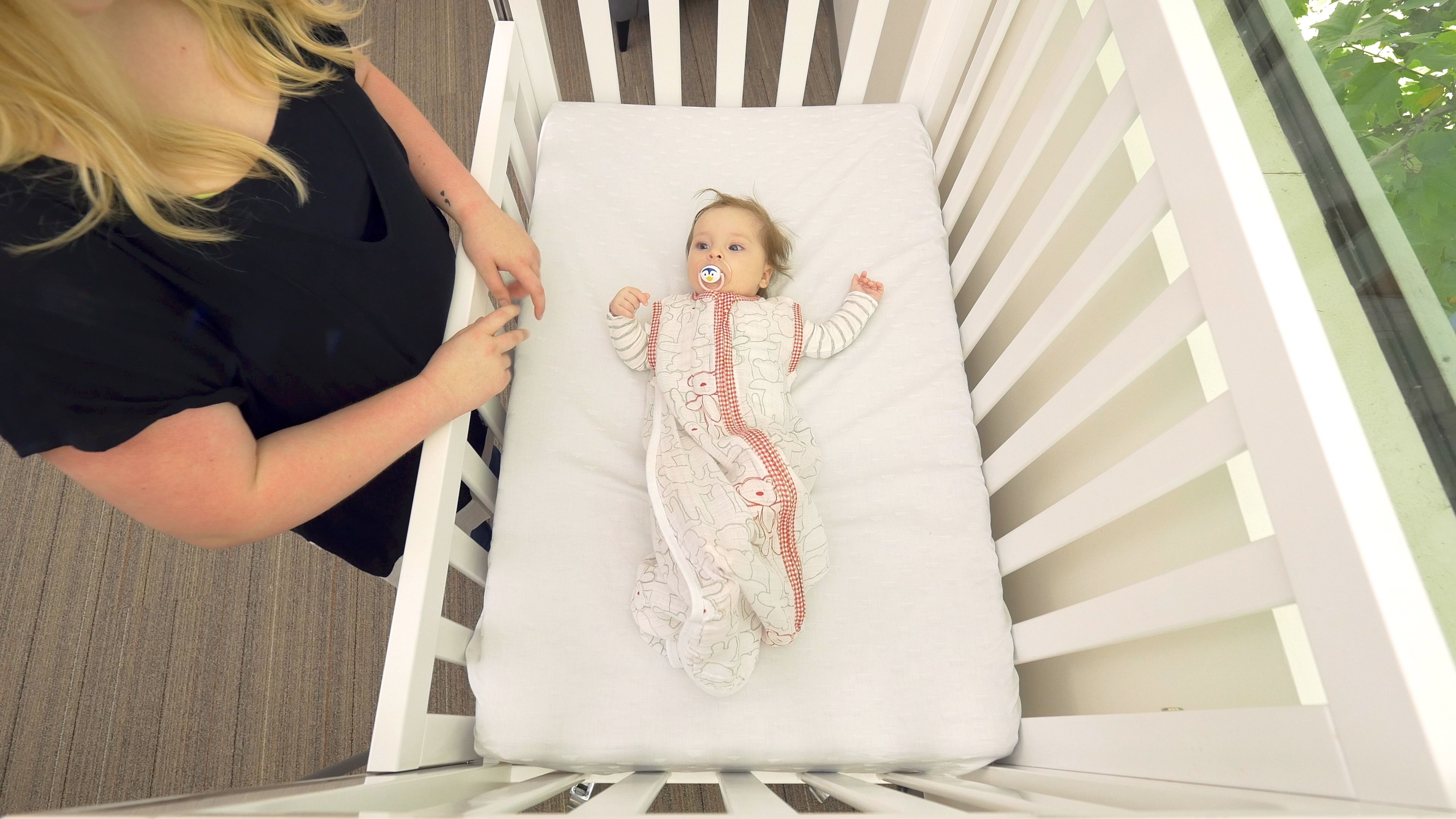
For parents, one of the hardest things to navigate is knowing how to sleep their baby in a safe way that reduces the risk of SIDS (Sudden Infant Death Syndrome).
While we still don’t know why this happens, Red Nose has developed a list of six evidence-based safe sleeping recommendations. These have resulted in a decrease in sudden and unexpected death by 85 per cent since 1989.
The safe sleep recommendations
Sleep baby on back:
Sleeping your baby on their back reduces the risk of sudden and unexpected death. The chances of a baby dying suddenly or unexpectedly increases when a baby is slept on their side or tummy. Red Nose recommends always putting your baby to sleep on their back. By sleeping your baby on their back on a firm mattress, they are less likely to overheat, suffocate or choke on vomit than tummy or side sleeping infants as the auto-protective mechanisms of arousal and swallowing are strongest in this position.
Keep baby’s head and face uncovered:
Covering your baby’s head or face during sleep may cause them to overheat or suffocate. Red Nose recommends safely wrapping or swaddling newborns as this is a very useful way to soothe and settle your baby in preparation for sleep. Once your baby shows signs that they are attempting to roll, dressing them in a safe sleeping bag with a fitted neck and armholes and no hood provides a safe and comfortable alternative. Always place your baby with their feet at the bottom of the cot with a sheet and/or light blanket tucked in firmly at the sides of the cot. This will stop them from wriggling under covers and accidentally covering their face.
Keep baby smoke free before and after birth:
There is an increased risk of sudden and unexpected death to babies who are exposed to smoke during pregnancy or after birth. Researchers have found that babies exposed to second-hand tobacco smoke do not wake as easily as babies who have not been exposed to smoke. To keep your baby safe, ensure parents, caregivers, friends and visitors do not smoke. Third hand smoke, that is, remnants left in hair, nails and clothing also presents a risk. Ensure those who smoke have washed faces and hands and have changed their clothes prior to handling your baby.
Have a safe sleeping environment night and day.
A safe sleeping environment means that all potential dangers have been removed and that your baby is sleeping in a safe place. The ideal place for a baby to sleep is in a safe cot that meets current Australian Standard AS2172 (check that second-hand cots meet this standard), on a mattress that is firm, clean and flat. Unsafe settings include leaving a baby unattended in an adult bed, beanbag, couch, pillow or cushion; or with a sleeping adult or child on a couch, sofa or chair.
Also make sure that your baby’s cot is away from hanging cords such as blinds, curtains or electrical cords that could get caught around their neck. Also ensure you don’t have soft bedding or toys in the cot as this can increase their risk of suffocation. This includes pillows, lambs’ wool, doonas, and soft toys such as teddies. Using cot bumpers also increases suffocation risk if your baby accidentally rolls against it but is unable to right themselves to roll away. Read a brief guide to cot safety.
Sleep baby in safe cot in parents’ room.
The safest place to keep your baby’s cot for the first 6-12 months is next to your bed. Sleeping a baby in the same room as the parent has reduced the number of babies who have been found with blankets covering their head and in a tummy position during the night.
Breastfeed baby:
breastfeeding is the optimal source of nutrition for a baby and has been shown to significantly reduce the risk of sudden and unexpected death for many reasons.